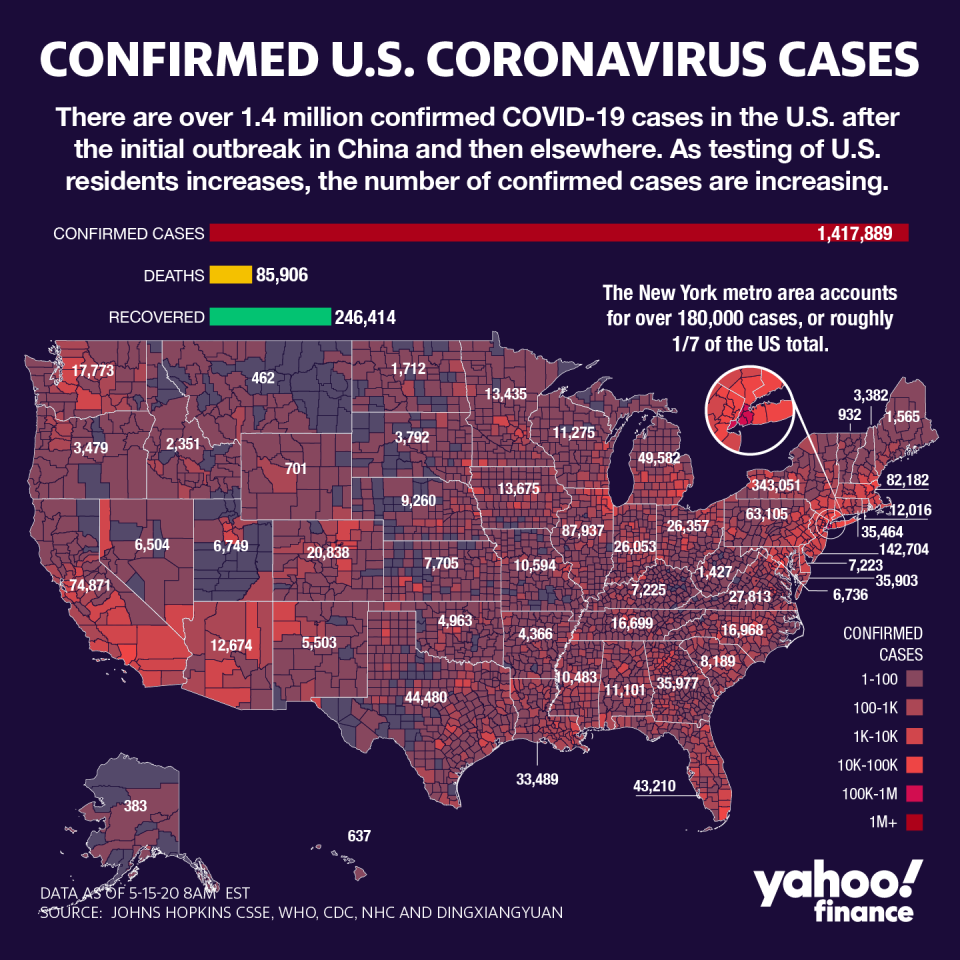Why optimism over a coronavirus vaccine might be misplaced
As COVID-19 infections rise worldwide, pharmaceutical companies working on coronavirus vaccines have floated promising — and sometimes aggressive — timelines for regulatory approval.
However, it’s highly unlikely that any treatment will see the light of day in 2020, given that the availability of those currently under development will be dedicated solely to emergency use.
Hopes for an effective treatment are building alongside expectations that more states can gradually relax the stay-at-home orders decimating the economy. Yet in a Senate hearing this week, Dr. Anthony Fauci, director of the National Institute of Allergy and Infectious Diseases (NIAID), reiterated his belief that a vaccine in time for the Fall school term is unlikely.
Back in March, Fauci said that, at best, the industry will find a “signal of efficacy” by the fall.
”And an efficacy signal means that even though you haven’t definitively proven that a vaccine works, you get enough information that if it were an emergency, you might be able to have an emergency use authorization for it,” Fauci said at a March 31 briefing.
On Friday, President Donald Trump on Friday unveiled Operation Warp Speed, an initiative to “finish developing, and then manufacture and distribute, a proven coronavirus vaccine” expeditiously, perhaps by year’s end.
Still, even with dozens of companies furiously at work on a vaccine, health care professionals say 2021 is the more reasonable timeframe — and that’s if everything goes perfectly.
“We’ve never seen everything go perfectly,” said Dr. Rick Bright, the whistle-blowing former BARDA director who was in charge of developing vaccines for the coronavirus.
“I think it’s going to take a lot longer than that,” he told a Congressional hearing on Wednesday. In addition, production remains a major concern.
“Normally it takes up to 10 years to make a vaccine. We’ve done it faster in emergency situations...when we had starting material in the freezer for Ebola,” Bright added. “But for a novel virus, it actually hasn’t been done quickly.”
‘No one company’ to produce billions of doses

The breakthrough success of Gilead Sciences’s (GILD) remdisivir, an experimental antiviral treatment that’s receiving emergency use authorization from the FDA, is an example of why expectations for an accelerated timeline for a vaccine are so problematic.
In Gilead’s case, there are only 1.5 million doses available, which the company has pledged to donate. However, the distribution plan has already run into trouble, with some states and hospitals left empty-handed amid a confusing prioritization method.
The company has signed voluntary licensing deals with five generic manufacturers to help meet the demand in 127 countries — and is not collecting royalties on the drugs until a vaccine is found or until the World Health Organization rescinds the global health emergency designation for the coronavirus.
The level of unprecedented demand — which will require several billion doses — is also a major concern for vaccine makers. With government and non-profit help, they are ramping up doses of their unproven vaccine candidates.
When one does become available, “there’s no one company that can produce enough for our country or for the world. It’s going to be limited supplies,” Bright told lawmakers this week.
“We need to have a strategy and plan in place now to make sure we can not only build that vaccine, make it, distribute it, administer it, in a fair and equitable plan. We don’t have that yet and it is a significant concern,” he added.
Meanwhile, the U.S. has yet to surmount its biggest challenges: How to test for COVID-19 infections and antibodies. The sheer scale of coronavirus testing has bedeviled the world’s largest economy since the crisis began over two months ago.
Currently, the Centers for Disease Control and Prevention (CDC) is working on a way to ramp up contact tracing in order to support the increased testing when it happens. Ex-CDC director Tom Frieden told Yahoo Finance in an interview that the swelling ranks of jobless U.S. workers could be the key to ramping up contact tracing efforts — which requires a significant amount of manpower.
“We have (36 million) unemployed Americans. You’ve got people laid off” from various industries and walks of life, he said. “So there’s no shortage of people.”
In order to safely reopen, and regain the public confidence, Frieden said, the country needs tracers, as well as wraparound services for supporting roles like income, food, laundry, telemedicine, among others.
He added that even if governments choose to reopen, public confidence needs to be there too.
“Its not the lockdowns that are shutting (down) economies, by and large, it’s people’s rational fears of getting killed if they go out to shop or work or dine,” he said.
Anjalee Khemlani is a reporter at Yahoo Finance. Follow her on Twitter: @AnjKhem
[Click here for more of Yahoo Finance’s coronavirus coverage: Personal finance tips, news, policy, graphics & more from Yahoo Finance]
Follow Yahoo Finance on Twitter, Facebook, Instagram, Flipboard, LinkedIn, and reddit.
Find live stock market quotes and the latest business and finance news.
